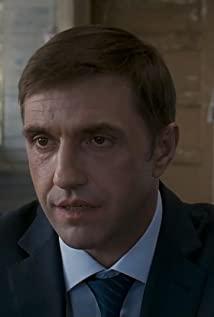'No Love to Tell' has a very powerful beginning
At least three functions are implemented at the beginning.
1. Set the tone for the entire film. The empty scene in the forest at the beginning of the film, the tone is very cold, and the snow is silent, which sets a cold and slightly gloomy tone for the whole film.
2. Important figures appear and hint at their fate. As an important character, the little boy carries a certain political metaphor, and the movie also hints at his fate. The red warning tape hung from the tree by the little boy suggested he would die.
3. Explain the relationship between the characters and lead the plot of the whole film. The mother-father dialogue conveys these messages to the audience: their impending divorce, the poor relationship between the mother and the grandmother, and the father's fear of divorce. At the same time, after the conversation ended, the little boy overheard the crying scene, letting the audience understand that the source of the story was "the impact of divorce on the little boy". The director punches the audience after the dull dialogue, which is quite tense.
The use of music is restrained and powerful
In addition to the beginning and the end of the movie, there are 4 pieces of music in total, which sound as heavy as sad music. When the first piece of music appeared, the scene of the female protagonist driving home and having lunch with the male protagonist was connected. At this time, the little boy had run away from home, but the male and female protagonists did not know it. The music is linked to the fate of the absent character, the little boy. Every time the music plays after that, it is a crucial moment for the little boy's fate. Although he does not appear in the picture, the audience knows his fate.
The third piece of music appears when the snow starts to fall outside the window, two teachers are packing things in the office, but they are not the focus of the picture (the focus is the heavy snow outside the window), and the sad music plays again. The search and rescue team came to the river, and the captain said: We will not go into the river, because it is the police's job to search for the bodies. The music and heavy snow (auditory and visual) not only create the atmosphere, but also hint at the death of the little boy.
The fourth piece of music, which appeared when a missing person was posted, was still as sad as mournful music. In the next scene there is the scene of identifying the corpse. In general, the music of this film is one step ahead of the turning point of the characters' fate, and the melody of each piece of music is similar, forming an auditory motif, which is matched with the heavy snow that arrives as expected, as if it heralded the death of the little boy step by step.
The passage in the mortuary to identify the corpse should be the most intense moment of the character's emotions. At this time, the director did not use the background music, because the actor's performance was already impactful enough without the aid of music. The director uses sad music when the characters are in a stable mood, but does not have any music when the characters are intense. This seemingly dislocated effect is actually quite sophisticated, restrained and deep.
The director's restrained and profound approach is also reflected in the arrangement of the plot sequence. The heroine has a heated dialogue with her mother, explaining the confrontational relationship between the two. After this long conversation, the heroine said to the hero: I was with you just to escape from the family. Arranging the heroine to speak to the hero after arguing with her mother not only conforms to the psychological logic of the characters, but also helps the audience understand the characters better. At the same time, the heroine's relationship with her mother is replicated to her and her own son, both parent-child relationships: the strong mother and the fleeing child.
In fact, at the beginning of the movie, the parent-child relationship between the heroine and the little boy is well explained. When the heroine asked the little boy to tidy up the room, the little boy slammed the door shut, and the heroine was separated from the painting by the door. The director uses such lens language to implicitly express the estrangement between the little boy and his mother.
The director's implicit expression can also be found in the passage of the police visit. The police first ruled out the possibility that "the parents conspired to kill the child and lied about his disappearance", but in fact the real plot is "the divorce of the parents killed the child". The director revealed the truth of the incident through the mouth of the police.
In literary and artistic works, the father often symbolizes the government, and the mother often symbolizes the motherland. In the closing news segment, the working class is rendered homeless by war, and the little boy is their concrete symbol. The cowardice of the father in the film precisely represents the incompetence of the government, and the indifference, strength and pursuit of personal life of the mother precisely represent the abandonment of Ukraine as a former "motherland" by Russia. The father (the ruling class) arbitrarily makes a big belly (no sense of responsibility), and the mother (the motherland) abandons the child (both Ukraine and the bottom) for the sake of a new personal life (booming desire), it is no wonder that the child will run away from home and be violent. wilderness. The director used such a text about marriage and family to make a heavy metaphor for the social status of Russia.
(There are more movie reviews, just on George's public account "Things About Movies", scan the code to follow)
View more about Loveless reviews











